- Getting started is easyAre you ready to become an ADS customer and receive your supplies at home every 90 days? Joining ADS is easy!
- Current PatientsAt ADS we obsess over the customer experience. Browse our helpful links and FAQs or send us an email at [email protected].
We are here to help! - Putting Patients and Healthcare Professionals FirstExperience the difference by contacting our contracting team at 1-760-579-7202 to discuss details of a partnership and/or refer a patient.
- Industry experts since 2002.The ADS Supply Group’s vision is to be the nation’s premier diabetes equipment supplier by wowing our customers and providing best-in-class service to patients.
- Living with DiabetesTips on lifestyle, diet, and emerging technologies all geared towards those living with diabetes.
Diabetes Products.
ADS is an industry-leader in providing diabetes products and supplies, including diabetes test strips, insulin pumps, and CGMs. Browse our extensive catalog of diabetes care products below.
Continuous Glucose Monitors
What is a Continuous Glucose Monitor?
CGM is one of the most comfortable and easy ways to keep track of your blood glucose levels. Through tiny sensors, their advanced technology collects information regarding your blood glucose levels continuously. Advanced Diabetes Supply is the industry leader in supplying these products to diabetic patients.
Since this new technology focuses on giving you real-time readings day and night, they help to reduce the amount of times per day you need to do finger prick testing. Additionally, with new technology integrations via mobile phones and closed loop devices, our patients have the equipment to manage their diabetes health easier with less worry.
HEALTHCARE PARTNERS: CMS has temporarily waived its face to face requirement to qualify for CGM and ADS can accept telehealth visits and medical record documentation that follow the current CMS criteria
Filter By:
- Abbott (5)
- Accu-Chek (0)
- Bayer (3)
- BD (2)
- Clever Choice (2)
- Continuous Glucose Monitors (0)
- Dexcom (2)
- Dexcom G6® Transmitter (1)
- Dexcom G7 (1)
- Embrace (1)
- Eversense (2)
- Freestyle Libre 2 Sensor (1)
- Fresstyle Libre 3 (1)
- Humalog (1)
- iLet Bionic Pancreas (1)
- Insulin Pumps & Supplies (0)
- Medtronic (9)
- Nipro Diagnostics (1)
- Nova Biomedical (3)
- NovoLog (0)
- Omnipod (2)
- OneTouch (4)
- Pharmacist Choice (3)
- Prodigy Diabetes Care (4)
- Simple Diagnostics (1)
- Tandem (9)
- Trividia Health (2)
- True Metrix (1)
- Unistrip (1)
Showing 1-9 of 12
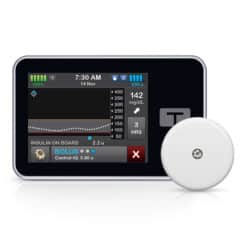
Abbott® FreeStyle Libre 2 Plus Sensor
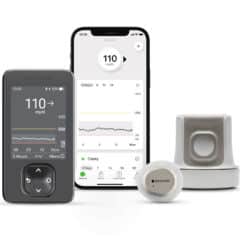
Dexcom G7® Continuous Glucose Monitoring System
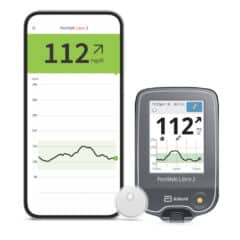
Abbott® FreeStyle Libre 3 System
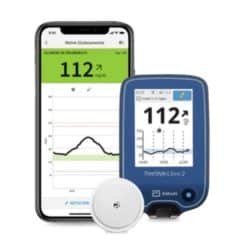
Abbott® FreeStyle Libre 2 CGM
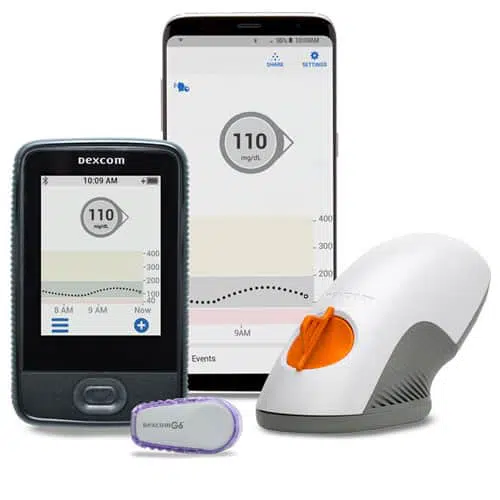
Dexcom G6® Continuous Glucose Monitoring System
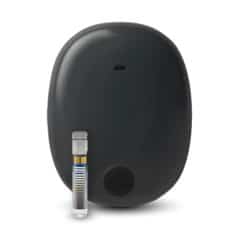
Eversense® Continuous Glucose Monitor
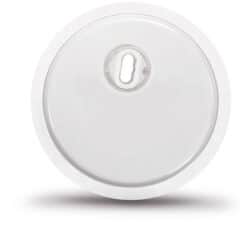
Abbott® FreeStyle Libre 3 Sensor
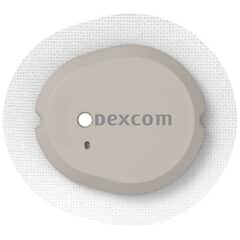
Dexcom G7® Sensors
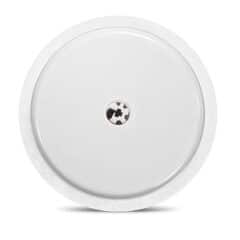
Abbott® FreeStyle Libre 2 Sensor
Frequently Asked Questions
Continuous Glucose Monitors
Yes! CGM compliance creates massive healthcare savings at an estimated $3,555-$6,747 per person over 3 years through improved patient outcomes.1
These savings are realized through the following health benefits:
Reduced event rates for severe hypoglycemia (SH) and diabetic ketoacidosis (DKA)1
Reduction of A1C in both T1D and T2D2
Increased Time in Range3,4
Improvement in Quality of Life3
1 https://diabetesjournals.org/diabetes/article/69/Supplement_1/67-LB/57289/67-LB-Clinical-Cost-Offset-Analysis-Comparing-Real
2 Beck RW, et al. JAMA. 2017;317(4):371-378.
3 Noar A, et al. A1C Reductions and Improved Patient-Reported Outcomes Following CGM Initiation in Insulin-Managed T2D. Presented at ADA 80th Scientific Sessions; June 12, 2020; Virtual.
4 Kovatchev B, et al. N Engl J Med 2019;381(18):1707-17. C
Using a blood glucose monitor requires multiple fingersticks a day to monitor blood sugar levels. With continuous glucose monitors, the sensor measures the interstitial fluid multiple times per hour, providing about 288 readings per day. Additionally the CGM provides reporting that makes it easy to track high and low trends and share readings with loved ones and caregivers.
According to the ACE (American College of Endocrinology) and the AACE (American Association of Clinical Endocrinologists), it is recommended that those with Type 1 diabetes make use of continuous glucose monitors.
What’s more, continuous glucose monitors are also useful for Type 2 diabetic patients who are already using basal insulin, sulfonylureas, or insulin injections. Even those who are at risk of hypoglycemia or suffer from hypoglycemia unawareness will gain benefits through CGM.
CGMs work through a small sensor wire that the users insert under their own skin with an automatic applicator. The sensor housing stays in place with an adhesive patch. With the interstitial fluid, the sensor can read glucose levels all day and night.
Furthermore, a transmitter that is connected with the sensor wire is then able to send real-time readings to the user’s receiver. That way, you can view your pertinent information in an understandable form.
There can also be a smart device with an app for continuous glucose monitors. This means you can view your current and previous glucose levels right on your smartphone! Custom alerts are another boon, where the device can warn you if the glucose reaches a dangerous threshold.
The various benefits of continuous glucose monitors are apparent, but let’s look at the upsides in detail:
- Around 288 readings in a full day
- Insight about glucose levels, the direction of change, and rate
- Ability to manage diabetes proactively
- The best outpatient system for managing and reducing A1C
- Reduction in hypoglycemia
- Alerts for dangerous highs or lows in glucose levels
- Active monitoring during the night
Cover the sensor with a CGM securement patch like the RIghtCare CGM Patch, made with KT Tape Pro Extreme.
The sensors used in continuous glucose monitoring systems can stay in place for quite a while. For example, the Dexcom G6 CGM’s sensors can be used for 10 days before they’ll need to be replaced. The FreeStyle Libre 2 sensor lasts 14 days.
It’s easy to use a CGM. You just insert a small sensor under the skin by using a simple applicator. The sensor is held in place by adhesive tape. This allows the sensor to measure glucose readings in the interstitial fluid, which is fluid that surrounds the cells. It takes the readings throughout the day and night.
A transmitter, which is connected to the sensor, causes the system to send real-time readings wirelessly to either a monitoring device or an app on your smartphone that displays your glucose data.
Yes, the continuous glucose monitoring systems sold by ADS have been approved for use by patients with diabetes by the FDA. If you run into any unusually high or low readings from your CGM, you can confirm them with a fingerstick test.
Yes, once qualified all ADS patients receive 90-day supplies with each order regardless of private insurance or Medicare/Medicaid coverage.
Some might still ask why they should buy continuous glucose monitors from us. With ADS, you are assured of the best accreditations within the field of diabetes supply.
Moreover, we take care to give you the best possible customer service at every point. Our customer care representatives are trained to care about our valued customers. For any questions regarding CGM products and therapies, please call us at 1-866-422-4866, or contact our Customer Care Team.